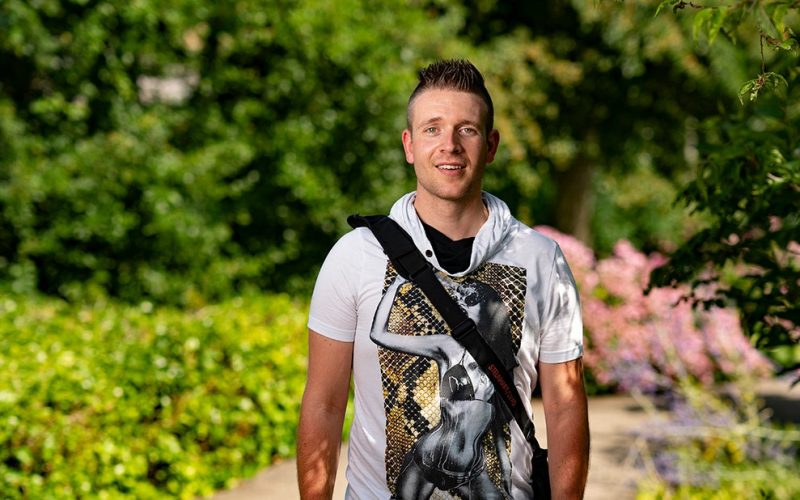His heart was enlarged, its walls thickened and it had only 8 percent pumping power left. For a while it was tense whether Roman would make it through the weekend. At UMC Utrecht, he received a support heart. A year and a half has passed since then. “I’m so used to it, it would almost be crazy not to have the support heart,” Roman said.
“In retrospect, I did get more tired than usual, but I didn’t look for much behind that. We had just had a baby, besides, I am a truck driver and often drive at night,” Roman (27) says. For a year he had heart failure without any suspicion. “Within a week it had suddenly gotten so bad that my girlfriend called out, ‘You look like hell, you need to see the doctor.’ The latter rushed me to the hospital by ambulance. Exactly one week after I collapsed, I was on the operating table and received a support heart.”
From the support heart team, Roman was explained his support heart, a mechanical pump that supports the function of his left ventricle. And how to carry the pump in a bag around his body. All that had to sink in. “You’re a little limited in everything, and that bag gets in the way. My little daughter wants to play with it all the time. When I change the battery, she wants to grab it with her grabby little hands. But it’s easy to live with. I’m so used to it, it would almost be crazy now if it weren’t for the support heart.”
Roman has had his support heart for a year and a half now. His medication is still the most complicated, he thinks to himself. “I also have Bechterew’s disease, my joints are inflamed. But because of my heart problems, I am no longer allowed to take the Bechterew medications. So my rheumatologist always consults with the cardiologist.” In the beginning, he had to go to the hospital every month for check-ups. Always together with his girlfriend, driving up and down from North Holland by car. Now he only has to do that twice a year and all his appointments are always on one day. “A day at UMC Utrecht is what I call it, as if it were an outing. You can sit and sulk, but it won’t do you any good.”
Roman is no longer allowed to drive a truck, his license has been taken away and he is on sick leave. “I am allowed to drive privately and I also got my tractor and motorcycle license back. But no passenger transport, no professional driver on a truck or cab and I am not allowed to become a driving instructor. I find that very unfair. I can work, I could do it for 40 hours. I became a truck driver for a reason. But a European rule stops me.
Roman’s second cousin also has a supporting heart. When that one just came out of the hospital, Roman went in. That was enough of a signal for doctors to recommend a hereditary test. “We got tested for a gene for heart disease. If you know you have this gene, maybe you can take it into account a little bit. And in any case, you then get checkups with the cardiologist every year. It’s also kind of intense, because getting life insurance or a mortgage becomes more difficult. But if you don’t know, I don’t think life is pleasant either. With every little pain you might think of your heart and want to go to the doctor. We are not going to tell our little daughter anything for the time being. I think a child should just be allowed to be a child. If she also has the gene, that will come later. I would hate for her to be burdened with that now.”
To still be able to do something, Roman is committed to raising awareness about heart failure. For example, he is participating in a study at the UMC Utrecht on how to improve the quality of life of patients with severe heart failure through a targeted exercise program. “Still quite difficult, because I’ve never been an athletic type. Now I go to the gym three times a week. I walk for half an hour and cycle for half an hour. At every hospital check-up I also do a cycling test at the sports medicine clinic.” The research is a project of the hospital’s charity; Friends UMC Utrecht & Wilhelmina Children’s Hospital.
